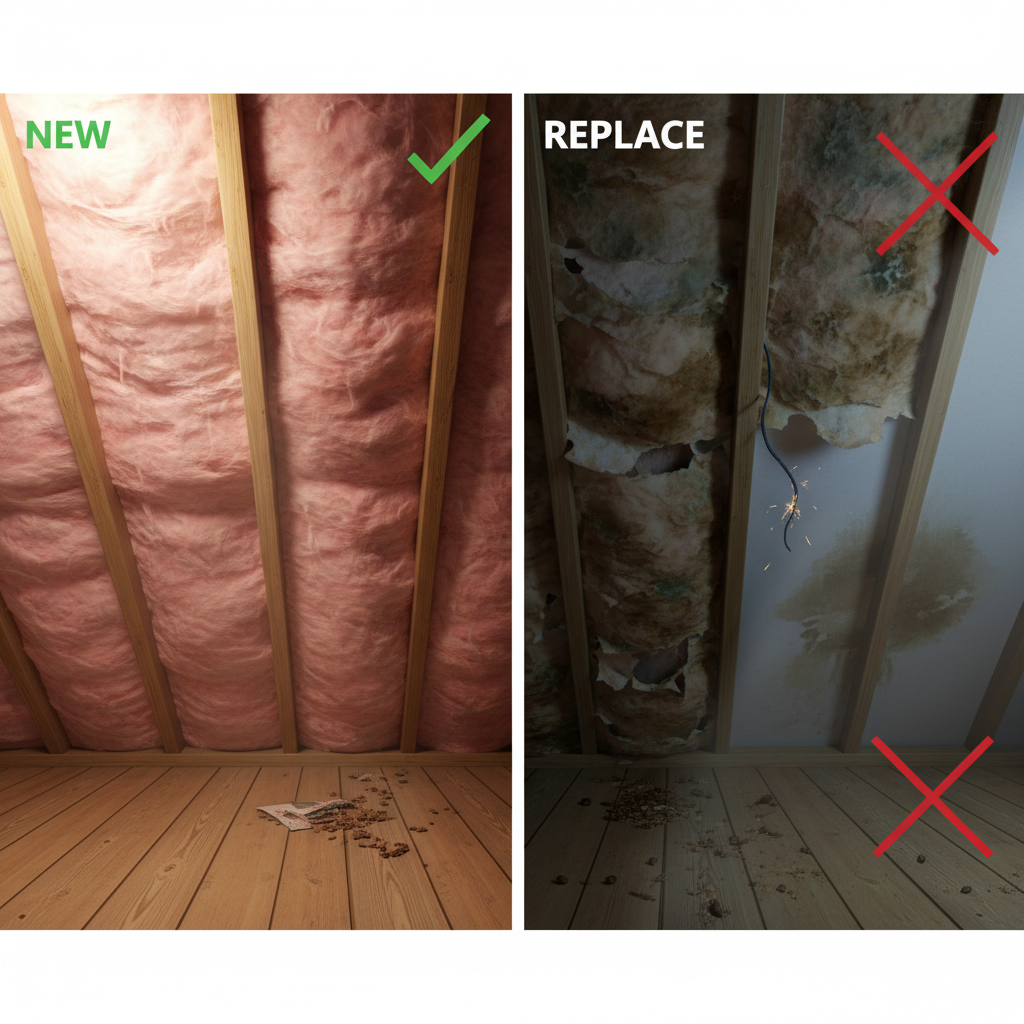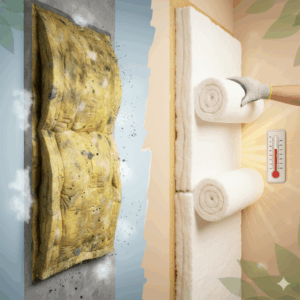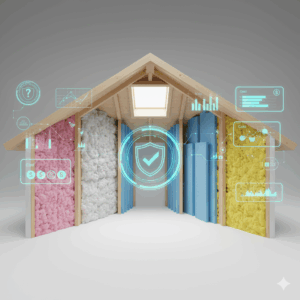Attic insulation plays a vital role in maintaining energy efficiency, indoor comfort, and overall home protection. Over time, insulation can lose effectiveness due to factors such as settling, moisture exposure, pests, or physical damage. Homeowners must assess their insulation periodically to ensure it continues to perform optimally. Consulting a certified insulation contractor can provide accurate evaluations and recommendations for replacement. Proper maintenance helps avoid higher energy bills and preserves the home’s structural integrity.
Deciding to replace insulation requires understanding the condition of existing materials and the performance expectations of new insulation. Homeowners considering home insulation services can benefit from expert assessments that measure current R-values, thickness, and coverage. A professional attic insulation company ensures precise installation while minimizing energy loss and long-term maintenance issues. Accurate evaluation at this stage lays the foundation for a safe, efficient, and cost-effective upgrade.
What Are the Signs That Attic Insulation Needs Replacement?
Homeowners should watch for several indicators that insulation is no longer effective. Common signs include:
- Noticeably higher energy bills in heating or cooling seasons.
- Uneven indoor temperatures or drafts in certain rooms.
- Compressed, missing, or displaced insulation layers.
- Moisture damage, mold growth, or evidence of pests.
Reviewing Does My Attic Have Enough Insulation? can help determine if current insulation meets modern standards or if replacement is necessary. Early detection ensures that insulation upgrades maintain both comfort and energy efficiency.
How Long Does Attic Insulation Last?
The lifespan of insulation depends on material type, installation quality, and environmental conditions. Fiberglass batts typically last 20–30 years, while blown-in cellulose may settle sooner, reducing thermal performance. Spray foam insulation is more durable but may degrade over time due to UV exposure or chemical breakdown. Mineral wool offers long-lasting fire resistance and soundproofing benefits. Understanding these factors helps homeowners plan timely replacement without unnecessary costs.
Material Considerations When Replacing Attic Insulation
Selecting the right insulation material is crucial for effective replacement. Fiberglass batts are affordable and widely available, while blown-in cellulose fills irregular cavities efficiently. Spray foam insulation provides high R-values per inch and acts as an air barrier, though professional installation is required. Mineral wool offers enhanced fire resistance and soundproofing. Homeowners can consult Types Of Attic Insulation Materials to explore the benefits and limitations of each type.
How Does Insulation Degradation Affect Home Performance?
Aging insulation can compromise energy efficiency, causing HVAC systems to work harder to maintain indoor temperatures. Moisture-damaged or compressed insulation may lead to mold growth, increased allergens, and structural issues. Replacing old insulation ensures consistent temperature regulation, improved indoor air quality, and long-term energy savings. Considering Pros & Cons Of Attic Insulations helps homeowners understand the trade-offs between initial cost, lifespan, and performance.
Replacing Attic Insulation: Installation Considerations
Replacing insulation involves careful planning and execution. Homeowners should assess attic access, existing materials, and potential hazards. Professional installation by an experienced attic insulation contractor guarantees proper layering, air sealing, and adherence to local building codes. Comparing installation methods in Blown-in Insulation vs. Batt Insulation: Pros and Cons allows homeowners to choose a solution that balances cost and efficiency.
Typical Lifespan of Attic Insulation Materials
| Material | Expected Lifespan | Maintenance Considerations |
| Fiberglass Batts | 20–30 years | May compress; inspect for gaps |
| Blown-in Cellulose | 15–25 years | Settling reduces R-value over time |
| Spray Foam | 30+ years | Professional installation required |
| Mineral Wool | 30+ years | Resistant to moisture and pests |
How Much Insulation Should Be Added During Replacement?
The depth and R-value of new insulation should match or exceed regional recommendations. In colder climates, higher R-values are necessary to reduce heat loss. Homeowners can calculate required quantities and costs by consulting How Much Attic Insulation Do I Need?, ensuring an optimal balance between efficiency, comfort, and budget.
Cost Factors for Replacing Attic Insulation
Replacement costs vary depending on material type, size, labor rates, and any preparatory work such as removal of old insulation. Blown-in cellulose may be more affordable initially, but spray foam offers long-term energy savings. Consulting What is the Costs of Attic Insulation helps homeowners budget effectively and understand the financial implications of replacement.
Removing Old Attic Insulation
Before installing new insulation, old or damaged material often must be removed. Proper removal minimizes exposure to dust, fibers, and potential contaminants. The complexity and cost of removal vary by material type and contamination level. Attic Insulation Removal Cost: Complete Overview provides detailed guidance for planning and executing safe removal.
Estimated Replacement Costs by Material
| Material | Cost per Sq Ft | Average Attic (1000 sq ft) |
| Fiberglass Batts | $0.40–$1.50 | $400–$1,500 |
| Blown-in Cellulose | $1.00–$2.50 | $1,000–$2,500 |
| Spray Foam | $1.50–$3.50 | $1,500–$3,500 |
| Mineral Wool | $1.50–$3.00 | $1,500–$3,000 |
Choosing a Professional Attic Insulation Company
Hiring a certified insulation company ensures the replacement process is efficient, safe, and compliant with regulations. Experienced contractors can recommend appropriate materials, calculate required insulation depth, and guarantee quality installation. Professional guidance maximizes long-term energy savings and indoor comfort.
Long-Term Maintenance After Replacement
Even after replacement, periodic inspection of insulation is essential. Homeowners should monitor for settling, moisture, pests, or damage that can affect performance. Regular maintenance by a professional insulation contractor prolongs energy efficiency and protects the home structure.
Conclusion
Knowing when insulation needs replacement is crucial for maintaining energy efficiency, comfort, and long-term home protection. Material type, age, condition, and environmental factors all influence replacement timing. Consulting a professional ensures proper assessment, removal, and installation. For expert attic insulation services, guidance, and reliable installation, homeowners can trust Guardian Home Energy for comprehensive solutions.
FAQs
How do I know if my attic insulation needs replacement?
Check for compressed or damaged insulation, moisture issues, increased energy bills, and uneven temperatures.
What type of insulation lasts the longest?
Spray foam and mineral wool typically offer the longest lifespan with proper maintenance.
Can I replace attic insulation myself?
DIY is possible for some materials, but professional installation ensures efficiency, safety, and code compliance.
Do I need to remove old insulation before replacing?
Yes, removal is recommended if existing insulation is damaged, contaminated, or insufficient.
How does replacing attic insulation affect energy bills?
Proper replacement reduces heat loss and cooling load, often resulting in substantial savings over time.





